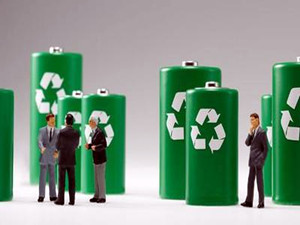Lithium Ion Battery Cost-Buying, Making, Materials
Nov 23, 2019 Pageview:1918
Lithium-ion battery technology is expected to be the leapfrog technology for drivetrain electrification and to provide stationary storage solutions so that renewable energy sources can be used effectively. For low-power applications such as consumer electronics and power tools, the technology is already been used. Extensive research and development has improved the technology to a point where safe and reliable lithium-ion batteries are likely to soon be used on board hybrid electric and electric vehicles and connected to solar cells and windmills. The technology's security is still a problem, however, service life is not yet adequate, and the costs of lithium ion batteries are too high. This article somehow, summarizes the state-of - the-art of non-expert lithium-ion battery technology. This lists battery materials and storage and summarizes the associated costs. This article will also promote a comprehensive understanding of materials and manufacturing and the need to address the remaining obstacles to successful market release of lithium ion batteries.
How Much Does A Li Ion Battery Cost?
Lithium ion battery cost varies from manufacture to manufacture. However, the estimated cost of a lithium ion battery for smartphones ranges from $2 to $4 which not only depends on its capacity but also other attributes of the design of battery that is it makes up around 1 to 2 percent of the mobile device's total cost. By contrast, an electric vehicle's lithium-ion battery cost ranges from $7,000 to $20,000, making it by far the most expensive item in the vehicle's cost. Whereas,The battery pack specifications for HEVs ( hybrid electric vehicles ) are $500 to $800 for HEV battery packs and $1,700 to $3,400 for PHEV battery packs which is quite expensive but worthful.
How Much Does It Cost To Make A Li Ion Battery?
The processing or making of lithium ion battery is very hard to separate from the cost of materials and is therefore included in the cost of materials. Therefore, the materials-processing cost of different materials dramatically changes and can therefore be called material-specific. New manufacturing methods, however, can reduce the current high cost of raw materials and makes it approachable.
The total cost to make a lithium ion battery including all material, making and labor cost is approximately $17000 for vehicle, however, for smart phones it is quite less but still an expensive one.
How Much Do Li Ion Battery Materials Cost?
The specifications and prices of raw materials are based on an L method. Gaines, R. Cuenza. The lithium ion battery that consist of 18 mm wide and 65 mm long a regular cylindrical cell with a total mass of about 40 g (including inactive content and packaging) and a size of about 1.35 Ah is required.
Although the cost structure of battery production is typically classified only for the battery manufacturers and their large customers that are why there is only sufficient information from different market studies and analysis to provide insight into the components that make up the total cost figure. The material cost is by far the largest contributor that is about 60 % of the total cost. With lithium ion batteries made from lithium-cobalt oxide cathodes (LCO) or nickel-cobalt-aluminum cathodes (NCA) used in Tesla, the raw cobalt cost is a major component, currently priced at $10.88 per lb. Moreover, as the lithium ion batteries contain electrodes and electrolyte that is the chemical which is responsible for the reaction inside the battery is quite expensive to buy as lithium metal is expensive and it is mainly available in Chile and China so that the cost to import lithium metal is also included in it.
However, the modern technologies are focusing to reduce the price of lithium ion batteries by inventing different other forms of lithium batteries which is safer to use as well as inexpensive.
Sales and labor costs
Labor is a comparatively small component of the overall cost— battery production combines substantial automation in low-cost countries, particularly China. Nonetheless, operating costs are much higher at 30%—including capital depreciation, energy costs, R&D, marketing, and administrative... etc.
The state of the art development of a cylindrical cell lithium ion battery on a production line involves mixing and grinding, calendaring and slitting, cutting, winding, sealing, automatic assembly and inspection followed by screening, cycling and packaging. This requires a total workforce of 76 to 104 people working on two lines in two shifts to generate 100,000 units per year which contributes a large amount to serve on this work force working in the manufacturing of lithium ion batteries.
Total cost
The total cost of the cell of lithium ion battery is approximately $1.70 for smart phones whereas, Battery scaling results in $1,700 ( twice the target price ). There is no fixed EV battery cost goal yet. Nonetheless, one could derive a highly uncertain estimate of $17,000 per battery based on this calculation.
The calculation indicates that a considerable effort is needed to achieve the objectives in order to reduce the cost of production and the product itself which is a lithium ion battery.
Conclusion
There is no doubt that, due to electrochemical efficiency of the batteries, theoretical ability and energy density, lithium-ion cell chemistries provide some of the best options for electrical energy storage for high power and high energy applications such as transportation and stationary storage. In the fields of product production, storage, and manufacturing, there are obviously needs of working. However, separating raw material costs from material processing costs is almost impossible because we never use pure raw materials in the process; Instead, we use material compounds that are suitable for use and are the least expensive in the manufacturing. It is therefore necessary to minimize investment costs and production cost to make them feasible for battery applications. Furthermore, even raw materials and compounds of materials are processed. It is therefore necessary to develop new low-cost processing methods for these materials and compounds in order to minimize the "raw material" and the overall cost of the lithium ion batteries.
- Prev Article: Lithium Battery Cost Per Kwh-Chances And Risks
- Next Article: Lithium Ion Battery Design Calculator Guide
Leave Message
Hottest Categories
-
Hottest Industry News
-
Latest Industry News











